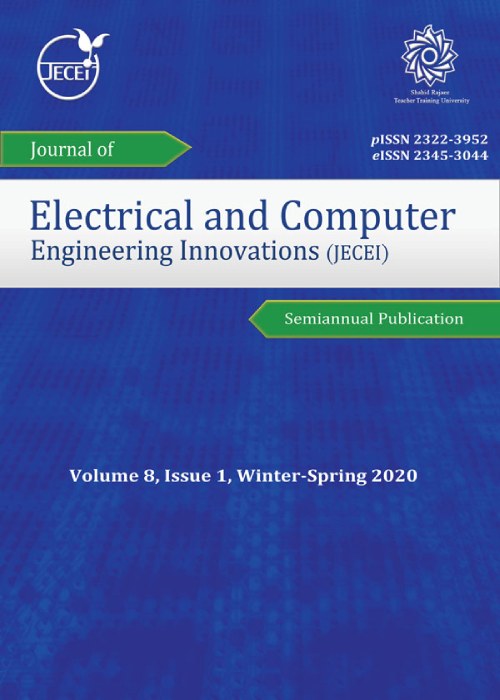Improved Bilinear Balanced Truncation for Order Reduction of the High-Order Bilinear System Based on Linear Matrix Inequalities
Author(s):
Article Type:
Research/Original Article (دارای رتبه معتبر)
Abstract:
Background and Objectives
This paper proposes a new Model Order Reduction (MOR) method based on the Bilinear Balanced Truncation (BBT) approach. In the BBT method, solving the generalized Lyapunov equations is necessary to determine the bilinear system's controllability and observability Gramians. Since the bilinear systems are generally of high order, the computation of the Gramians of controllability and observability have huge computational volumes. In addition, the accuracy of reduced-order model obtained by BT is relatively low. In fact, the balanced truncation method is only available for local energy bands due to the use of type I Gramians. In this paper, BBT based on type II controllability and observability Gramians would be considered to fix these drawbacks.Methods
At first, a new iterative method is proposed for determining the proper order for the reduced-order bilinear model, which is related to the number of Hankel singular values of the bilinear system whose real parts are closest to origin and have the most significant amount of energy. Then, the problem of determining of type II controllability and observability Gramians of the high-order bilinear system have been formulated as a constrained optimization problem with some Linear Matrix Inequality (LMI) constraints for an intermediate middle-order system. Then, the achieved Gramians are applied to the BBT method to determine the reduced-order model of the bilinear system. Next, the steady state accuracy of the reduced model would be improved via employing a tuning factor.Results
Using the concept of type II Gramians and via the proposed method, the accuracy of the proposed bilinear BT method is increased. For validation of the proposed method, three high-order bilinear models are approximated. The achieved results are compared with some well-known MOR approaches such as bilinear BT, bilinear Proper Orthogonal Decomposition (POD) and Bilinear Iterative Rational Krylov subspace Algorithm (BIRKA) methods.Conclusion
According to the obtained results, the proposed MOR method is superior to classical bilinear MOR methods, but is almost equivalent to BIRKA. It is out-performance respecting to BIRKA is its guaranteed stability and convergence. Keywords:
Language:
English
Published:
Journal of Electrical and Computer Engineering Innovations, Volume:11 Issue: 1, Winter-Spring 2023
Pages:
129 to 140
magiran.com/p2506121
دانلود و مطالعه متن این مقاله با یکی از روشهای زیر امکان پذیر است:
اشتراک شخصی
با عضویت و پرداخت آنلاین حق اشتراک یکساله به مبلغ 1,390,000ريال میتوانید 70 عنوان مطلب دانلود کنید!
اشتراک سازمانی
به کتابخانه دانشگاه یا محل کار خود پیشنهاد کنید تا اشتراک سازمانی این پایگاه را برای دسترسی نامحدود همه کاربران به متن مطالب تهیه نمایند!
توجه!
- حق عضویت دریافتی صرف حمایت از نشریات عضو و نگهداری، تکمیل و توسعه مگیران میشود.
- پرداخت حق اشتراک و دانلود مقالات اجازه بازنشر آن در سایر رسانههای چاپی و دیجیتال را به کاربر نمیدهد.
In order to view content subscription is required
Personal subscription
Subscribe magiran.com for 70 € euros via PayPal and download 70 articles during a year.
Organization subscription
Please contact us to subscribe your university or library for unlimited access!


